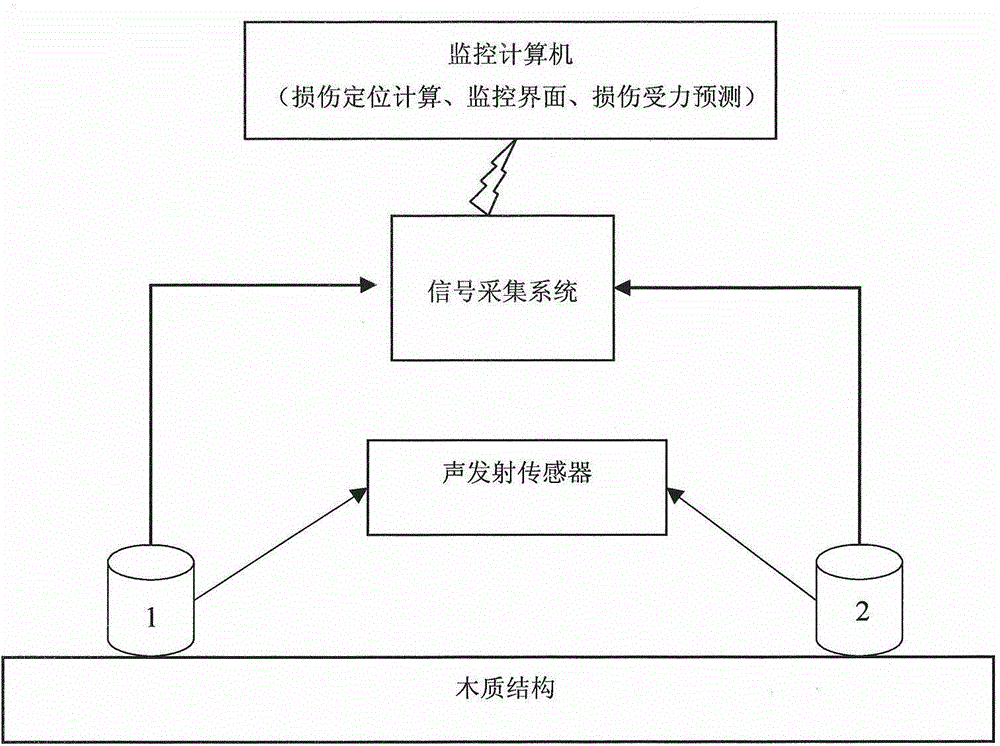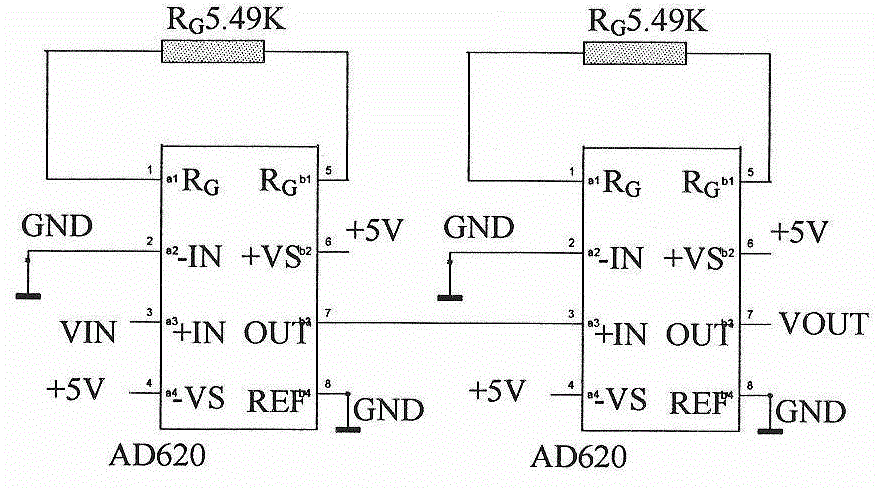Wood damage monitoring method based on acoustic emission technique
An acoustic emission technology and damage monitoring technology, which is applied in the field of wood, can solve the problems of distortion, air cracking and other problems, and achieve the effect of avoiding attenuation, avoiding major losses, and being easy to implement
- Summary
- Abstract
- Description
- Claims
- Application Information
AI Technical Summary
Problems solved by technology
Method used
Image
Examples
Embodiment Construction
[0036] The wood damage monitoring method based on the acoustic emission technology proposed by the present invention is described in detail as follows in conjunction with the accompanying drawings and embodiments. The invention takes wood as the measured object, and monitors the acoustic emission signal emitted by the damaged wood. attached figure 1 Schematic diagram of acoustic emission signal acquisition for wood stress damage. The frequency bandwidth of the acoustic emission signal is between 100KHz-300KHz, so the acoustic emission sensor in this design uses an ultrasonic sensor with a center frequency of 60Hz-400KHz and a center frequency of 150KHz. First place the acoustic emission sensor on an important part of the wood where the stress is concentrated. When the wood is deformed under the condition of internal or external force, a stress wave will be generated. The acoustic emission sensor converts the stress wave into an electrical signal. Since the electrical signal i...
PUM
 Login to View More
Login to View More Abstract
Description
Claims
Application Information
 Login to View More
Login to View More - R&D
- Intellectual Property
- Life Sciences
- Materials
- Tech Scout
- Unparalleled Data Quality
- Higher Quality Content
- 60% Fewer Hallucinations
Browse by: Latest US Patents, China's latest patents, Technical Efficacy Thesaurus, Application Domain, Technology Topic, Popular Technical Reports.
© 2025 PatSnap. All rights reserved.Legal|Privacy policy|Modern Slavery Act Transparency Statement|Sitemap|About US| Contact US: help@patsnap.com



